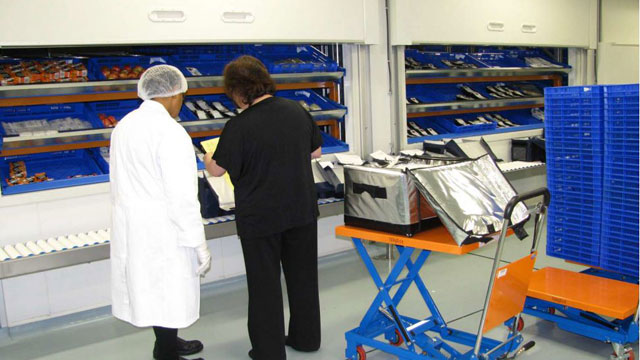Project Summary
The City of Greater Dandenong Council Meals on Wheels Service provides meals to eligible residents through its Home and Community Care Program. This service is available to residents in their own home or at a number of senior citizen centres throughout the municipality. The Meals on Wheels Service Distribution Facility receives meals daily from the Community Chef Regional Food Kitchen (CCRFK) located in Altona which are then stored in a controlled environment and later picked and packed into eskies which are distributed by council staff and community volunteers to eligible recipients.
Project Description
Project Objectives
To modernize and dramatically improve the Meals on Wheels Service provided by City of Greater Dandenong Council for the benefit of the residents and greater community.
To cooperate / partner with other councils to be a part of the CCRFK at Altona.
To secure a council owned and operated distribution facility fitted to ‘state of the art’ standards with improved food safety, environmental sustainability, working conditions for staff and increased space and operational capacity to manage future significant growth of the Meals on Wheels Service.
Project Outcomes
City of Greater Dandenong no longer prepares its own hot meals.
Pre-cooked and pasturized meals are received from the CCRFK at Altona.
Successful completion of new modern distribution facility located near major arterials and with ample capacity for expansion to meet future growth.
Timely and secure delivery of Meals on Wheels Service.
Improved food safety and handling.
Improved meal quality and choices for recipients.
Capability of maintaining meal stock, resulting in less food waste whilst giving greater flexibility in responding to the needs of the local residents.
Distinguishing Project Features
Process driven solution for distribution facility with focus on best practice and innovation resulting in a concept with key areas linked by integral personnel & product flows, quality control, statutory/regulatory and even community requirements.
1. Loading – Undercover receipt & dispatch of meals
2. Staging Airlock – Area to organize empty / full crates
3. Cold Room (2 Degrees C) – Meals dropped off by CCRFK in secure inwards goods store then checked & placed in quarantine until stacked into pickface racking.
4. Picking (18 Degrees C) – Meals picked & placed into eskies rolling along manual roller conveyor. Eskies placed in facility trolleys which are used to move eskies to Loading for placement into delivery vehicles.
5. Office & Lounge – Staff, volunteers & community area.
Innovative Project Features
Use of proprietary pickface racking system to maximize meal selection / picking options and facilitate future service growth.
Use of automated vertical lift panel doors and PVC curtains to minimise loss of refrigerated air from cold room and maintain operator comfort. Also good from an energy use and sustainability perspective.
Use of energy efficient lighting and motion sensors to reduce energy consumption.
Mechanical / refrigeration redundancy & constant temperature monitoring of facility to ensure operator comfort, product quality control. Interlocked doors to prevent loss of conditioned air.
Food grade construction, fittings, fixtures & detailing.
Diesel generator for backup power.
CO detection in loading bay.
Visual surveillance of Cold Room & Picking from Lounge & Office for operator safety.
Barriers to Overcome to Achieve Success
Significant change management required the input of multiple internal and external stakeholders in producing a new service delivery concept in order to be able to design a facility that would ultimately meet the service delivery processes and meet the objectives of the facility itself.
Costs / Benefits Associated with Project
Benefit to the community is ensuring supply certainty into the future, consistent meal quality, variety and meal choices whilst maintaining affordable meal prices. The facility provides a safe and welcoming environment for the 80-100 volunteers who deliver the meals to local residents.
Cost benefits due to decrease in staffing numbers required to provide the service.

Comments
There are no comments on this entry.